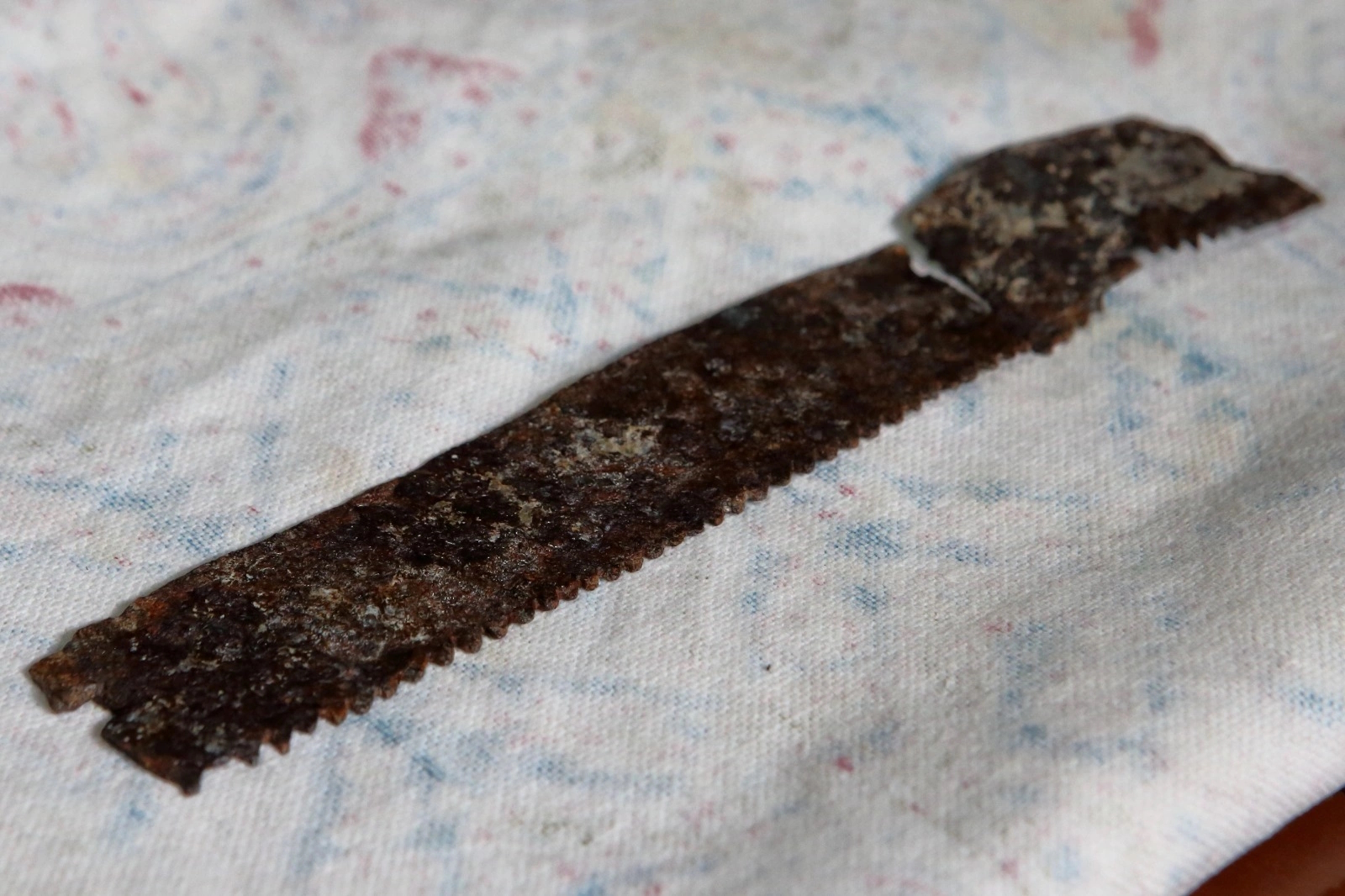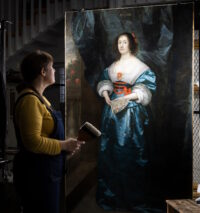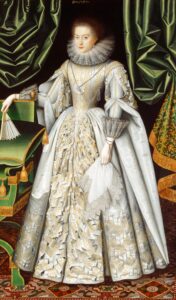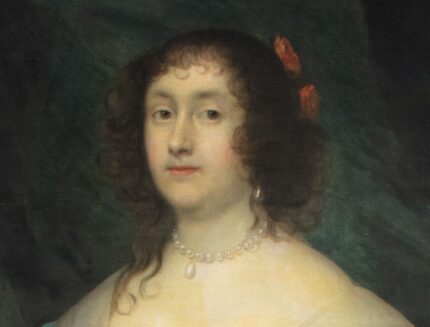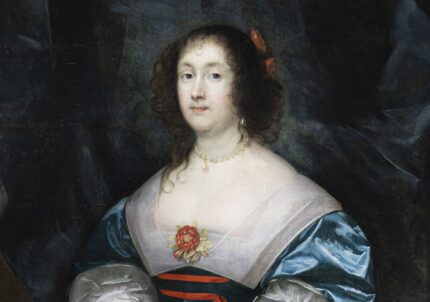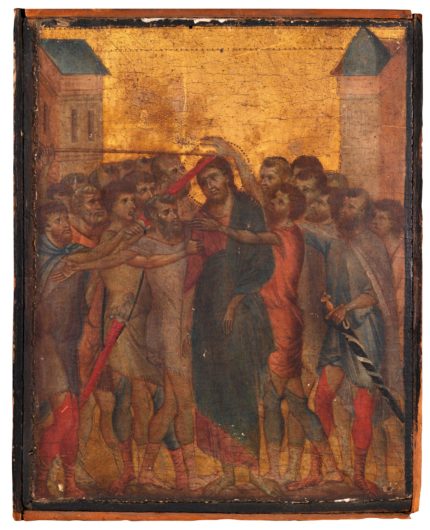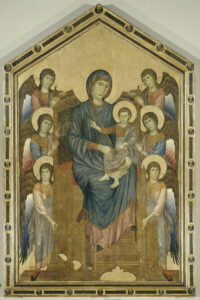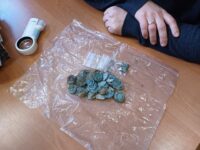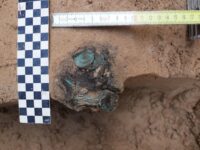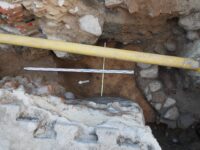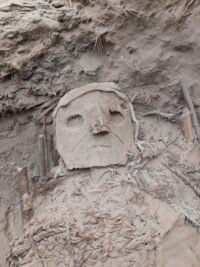 Archaeologists excavating the ancient Wari site of Pachacámac near Lima, Peru, have unearthed 73 intact mummy bundles, some of them with “false heads,” masks made of wood or ceramic. They date to the second half of the Middle Horizon period, between 800 and 1100 A.D., a period when the Wari Empire was expanding in territory and political power.
Archaeologists excavating the ancient Wari site of Pachacámac near Lima, Peru, have unearthed 73 intact mummy bundles, some of them with “false heads,” masks made of wood or ceramic. They date to the second half of the Middle Horizon period, between 800 and 1100 A.D., a period when the Wari Empire was expanding in territory and political power.
The burials were found in a complex of cemeteries from different periods at the foot of the Inca-era Painted Temple. The cemetery complex was first discovered in the late 19th century by German archaeologist Max Uhle. They had been widely damaged in the “extirpation of the idolatries” during the colonial period and would be repeatedly looted after Uhle’s excavation. The discovery of 73 undamaged burials is therefore of great archaeological significance.
 The team focused on excavating an area where a high wall of adobe bricks built in the Inca and colonial periods had collapsed. They deduced that any burials at the foot of the wall might have been protected by the heavy piles of bricks deterring looters. They were right.
The team focused on excavating an area where a high wall of adobe bricks built in the Inca and colonial periods had collapsed. They deduced that any burials at the foot of the wall might have been protected by the heavy piles of bricks deterring looters. They were right.
 The burials include people of both sexes. The earliest ones were buried individually. Later ones were buried in groups. The bundles are in excellent condition, with organic materials including finely-woven multi-colored patterned textiles, carved wooden masks, elaborately knotted ropes and human remains in an exceptional state of preservation. Two wooden staffs depicting Wari deities were found next to the cemetery covered with a layer of Spondydus princeps shells imported from Ecuador.
The burials include people of both sexes. The earliest ones were buried individually. Later ones were buried in groups. The bundles are in excellent condition, with organic materials including finely-woven multi-colored patterned textiles, carved wooden masks, elaborately knotted ropes and human remains in an exceptional state of preservation. Two wooden staffs depicting Wari deities were found next to the cemetery covered with a layer of Spondydus princeps shells imported from Ecuador.
The style of these staff is comparable to the famous cult image known as the ‘idol of Pachacámac’. This wooden carving depicts two deities standing on a high pedestal. Each of them looks towards the other like the Roman Janus, but the two figures are clearly joined back to back and each has a different character, i.e. a celestial aspect versus a telluric aspect, and are possibly also of different sexes. Stylistically, the idol is closer to the iconography known from the Castillo de Huarmey, among other places, than from the Wari religious centres at Ayacucho.
 The team’s findings contradict the previous understanding of Pachacámac history. It was not, as historians have posited, a sacred city from the construction of the Old Temple during by the Lima culture ca. 200 A.D. through the arrival of the Spanish. During the Wari Empire, it was not the monumental sacred site that was one of the most important in the central Andes. That only happened after it was absorbed in the Inca Empire.
The team’s findings contradict the previous understanding of Pachacámac history. It was not, as historians have posited, a sacred city from the construction of the Old Temple during by the Lima culture ca. 200 A.D. through the arrival of the Spanish. During the Wari Empire, it was not the monumental sacred site that was one of the most important in the central Andes. That only happened after it was absorbed in the Inca Empire.
The results of the research to date indicate that during the Wari Empire period, specifically between 800 and 1100 AD, Pachacámac had the character of a settlement, with a ceremonial platform. This platform is currently hidden under the rubble and terraces of the Painted Temple from the Inca period. The cemetery uncovered by Professor Makowski’s excavations does not have the character of an elite necropolis as suggested by Uhle. It is instead comparable to the Ancón site, which was the burial place of fishermen, from the part of the coast between the Chancay and Chillón valleys both during the Wari Empire and in later periods.
Due to the state of preservation and the precision of the documentation of the context of the finds at the time of excavation, as well as the laboratory analyses, the burial assemblages uncovered are a veritable goldmine of information on the social position of men, women and children according to kinship ties, the care of invalids, indicators of war and domestic violence. Nineteen of the bundles, with their lower part preserved and an intact structure, could be transferred to the laboratory in their entirety in order to document them three-dimensionally using CT scanning without having to be opened.
